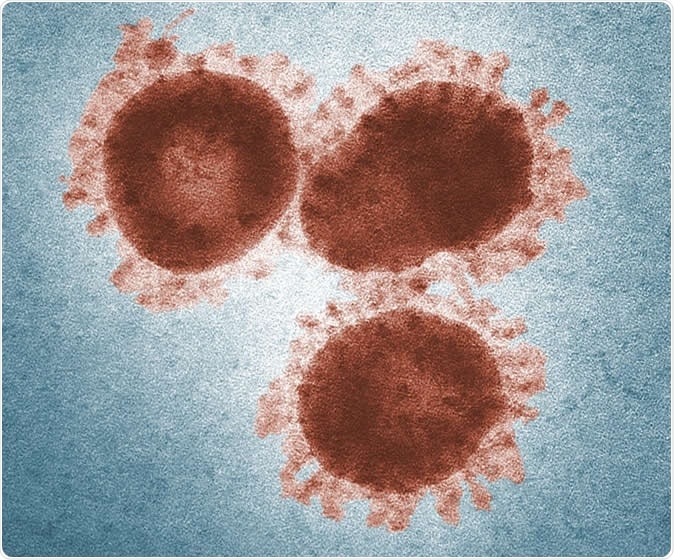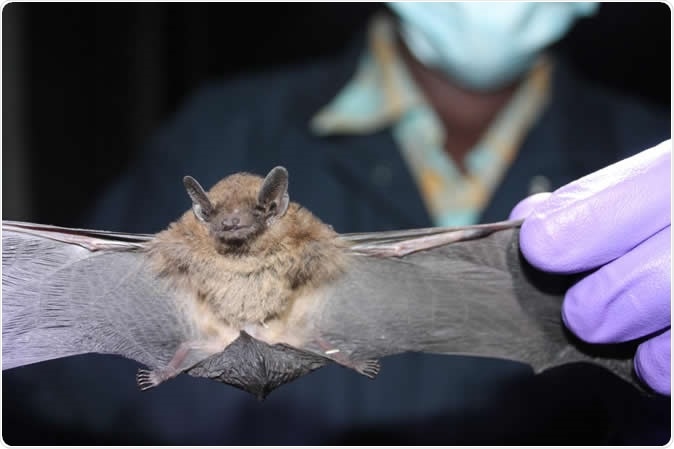Following an outbreak of infection by the novel coronavirus 2019 (2019-nCoV) which causes acute respiratory illness, in China, an emergency committee meeting was held on January 22 and 23, 2020, by the Director-General of the World Health Organization (WHO). The meeting sought to agree on whether this should be declared a Public Health Emergency of International Concern (PHEIC). This is the highest level of health-related emergency that can be called by the WHO. However, the committee’s consensus was that while this constituted a grave emergency in China, it fell short of a PHEIC.

Chongqing, China-Jan, 23th 2020: Chinese citizens wearing breathing masks to protect from 2019-nCoV disease. Helloabc / Shutterstock
The fear is that this epidemic will turn out to be a rerun of the SARS (Severe Acute Respiratory Syndrome), also caused by a coronavirus, in which 650 people died both in China and in Hong Kong, over 2002-2003. China has already reported over 2,900 cases so far, with 80 deaths so far. Most cases are in frail people, such as the elderly or the sick. About a quarter show signs of more severe illness, but scientists think that many cases are being missed because they are so mild. Infection cases are continuing to rise worldwide, 12 foreign countries confirmed 40 cases. Thailand has confirmed its eighth case, Australia its fifth and Japan and Malaysia have both reported their fourth.
The total number of cases and suspected cases, the number of affected provinces and the mortality rate are all showing an upswing. Social media are showing videos of patients enclosed in what looks like plastic tubes and boxes as they are transferred from ambulance to hospital.
The spread
Meanwhile, China confirms new mutations are appearing in the virus, making it more difficult to contain the epidemic by developing a vaccine. The virus has already made its way out of the country to Korea, Japan, Thailand, and Singapore.

These are coronaviruses (colored transmission electron microscopy image). Image Credit: Photo: Dr. Fred Murphy & Sylvia Whitfield/CDC
The source could be from animals, especially snakes like the Chinese krait and the cobra, which were among the live animals illegally sold in the Wuhan seafood market where the infection is posited to have first risen. However, currently it is also passed between humans by close contact at least. At present, there are fourth-generation cases in the original city and second-generation cases in other locations outside the city.
In contrast, the SARS virus is believed to have passed from the original bat host to other animals like civet cats. The current outbreak is thought to be the third instance of a coronavirus being transmitted from animal to human hosts.

A researcher examines a Pipistrellus hesperidus, or Dusky Pipistrelle bat. Credit: Kirsten Gilardi, UC Davis
Control measures
Strong containment measures have been put in place in Wuhan city, a city of 11 million inhabitants, where the outbreak emerged, and more and more nearby places in the Hubei province. Streets are deserted, with no planes or trains in or out of the city. The country is locking down more cities, including The Forbidden City in Beijing, as there are signs of rapid spread of the infection. About 20 million people are now confined to their cities and villages.
The traditional Lunar New Year crowds will be missing as the government has banned such gatherings.
A global crisis?
The following criteria were identified as signs of a possible worldwide crisis:
- Spread from person to person with a preliminary R0 (basic reproduction number) estimate of 1.4 to 2.5 – the infected individual can pass the virus on to 2.5 to 4 people.
- About 25% of cases are severe.
- The source of the outbreak is not known but genome analysis suggests it is zoonotic (spread from animals to humans), and perhaps from snakes.
- At least one center shows amplification of the disease.
Though not declaring the situation a PHEIC, the emergency committee has advised the WHO to continue to support the management of the outbreak, along with all its partners and collaborators, by putting a full-fledged plan in place to communicate the risk to all stakeholders, and to permit research and development to deal with this coronavirus.
Moreover, the committee also advised the government to give more detailed information about what measures are being put in place across governments to manage the risk. Surveillance and case finding measures are to be enhanced, with particular reference to the huge risk of transmission that is posed by the large crowds that typically gather to celebrate the Lunar New Year. Earlier, Wuhan city witnessed gatherings of this sort, with town officials seeking to encourage more tourists to visit the area. This has now stopped, hopefully in time to curb further spread.
The precautions
More research is necessary to understand its epidemiology, its development, its reservoir, the potential modes of transmission, and treatment requirements. Exit screening at airports and ports handling international travellers, along with screening at domestic travel hubs, is also encouraged.
An extremely important recommendation is that China must continue to share full information on the data coming to light about the virus, as well as about infections of health workers. In the earlier SARS epidemic, many unnecessary cases as well as deaths both inside and outside China occurred because of the hush-hush approach to disease-related information. This time round, the government has warned health officials not to hide information related to the current outbreak.
Since other countries are known to be involved, containment measures should be prepared for in advance. This includes surveillance, detecting cases early, isolating and managing cases according to the standard of care, and tracing contacts, while preventing the spread of the virus. All countries should keep their information current with the WHO as per the International Health Regulations. Many countries are also screening all passengers arriving from China by temperature.
Globally, this is a concern because of the novel virus, and a history of similar viruses which needed a lot of effort to share information and for research. The international community needs to stand united with China and with each other, to help identify how and where this virus emerged, how it spreads, and how to keep from importing new cases while promoting research on the best modes of treatment.
Some companies have initiated vaccine development. The Coalition for Epidemic Preparedness Innovations (CEPI) has formally asked the University of Queensland to come up with a vaccine using its new rapid response technology, centered on its patented molecular clamp platform. This technology is based on knowledge of the viral genome. This vaccine could be in the market within 6 months if all goes well.